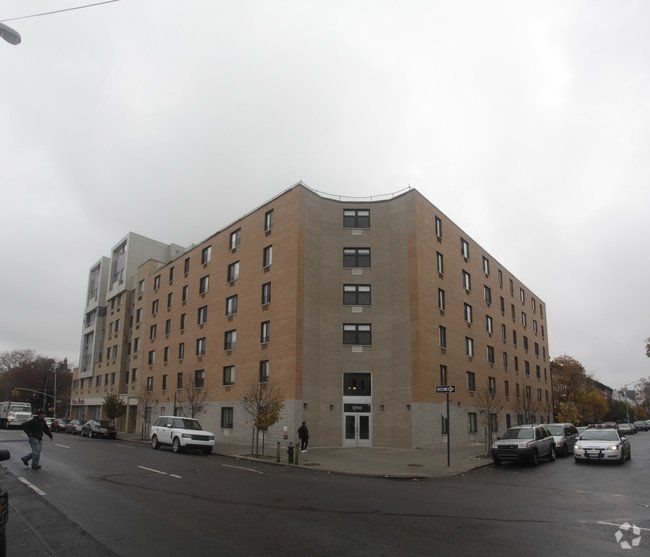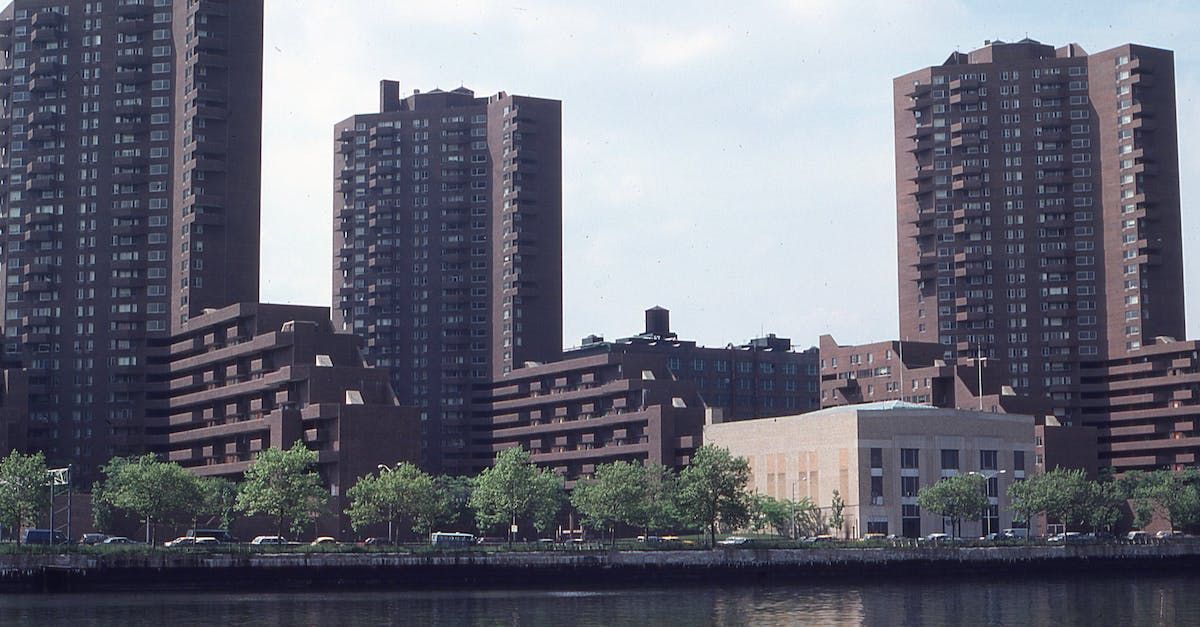Standard Carbon - ReDocs Round Table - Ep 01
What is Standard Carbon and how can NYC building owners benefit from it? And most importantly, does it make sense financially? Also, find out how you can decarbonize a 100-year-old NYC building with their existing boiler system. Mark Balsam sits down with Nathan Winkler to discuss Standard Carbon in ReDocs' very first roundtable.
Quick Summary:
- Standard Carbon changes the carbon dioxide coming out of the chimney into natural gas.
- It can be utilized in industrial and commercial facilities, as well as residential, such as NYC apartment buildings.
- Use in tandem with solar panels and off-peak hours, it can be well worth the investment.
- Installing this system can qualify for a number of tax credits.
Don't feel like reading the transcript?
Click here to watch the Round Table.
Full Transcript:
Mark Balsam
So Nathan, you have a I don't even know what to call it a product? A system? You're one of the founders of something called Standard Carbon?
Nathan Winkler
It's a product at this point, yeah.
Mark Balsam
Can you tell me what it is? And, what it does?
Nathan Winkler
Yeah. Standard Carbon takes what's coming out of the chimney of your boiler and it removes the carbon dioxide from that exhaust going out the chimney and turns that carbon dioxide into natural gas. And it does that using electricity. Which ideally will come from a renewable source.
Mark Balsam
Got it. And I actually saw one of your videos - I forgot if it was on your website or if you posted it on LinkedIn - but you actually had, you are connected to a car's exhaust ..
Nathan Winkler
My car!
Mark Balsam
.. and then on the other end, you lit a cigar! I'm assuming it's the same process. You're capturing the exhaust and then creating natural gas which then is a, you know..
Nathan Winkler
Correct! When we tested the system we hooked it up to my car, put a brick on the gas pedal. Of course it's a lease, so whatever damage you do the engine, it's on the leasing company, not me. And then the natural gas reproduced at the other end. We wanted to create a visual so in the efforts of being politically correct, we thought Cuban cigars would be the most appropriate way to show off natural gas that we produced from the carbon dioxide emissions coming out the tailpipe of the car.
Mark Balsam
Right. And is there an application for New York City buildings? I know that just in separate conversations, you said that the ideal candidate is some sort of industrial or commercial facility. But, you know, does it work for a New York City apartment building?
Nathan Winkler
Absolutely. The best application is like you said probably larger scale but actually the origins of the idea was my work in New York City. The issue with New York City buildings is that they're 100 years old, oftentimes, and it's really difficult to keep them other than with the existing boiler steam system and everything you have in place. And so, if you can keep that boiler and steam system exactly as is and then just remove the carbon dioxide from it and do something useful with that carbon dioxide. You can essentially decarbonize the heating system of your building without demolishing what's already there, and that's a huge advantage. And that's where what we're doing is applicable because we can install our product right next to the existing boiler, capture the exhaust from the boiler, convert the CO2 in the exhaust into natural gas, feed that natural gas back to the boiler, and run the whole thing off off-peak electricity or from solar panels on the roof. Electricity from another source.
Mark Balsam
But that's a good point. My understanding is that in order to recycle the exhaust gases back into into natural gas, you're using a process called "electrolysis," is that right? Is that the term for it?
Nathan Winkler
So, diving into the technical aspects, there are three main processes inside the Standard Carbon box. There's carbon capture to separate CO2 from everything else in the exhaust gas, and isolate it, so you have pure CO2 that we can work with. There's electrolysis, which is the using electricity to split water into hydrogen and oxygen. So we have hydrogen. And then there's a third part, methanation, where we combine hydrogen and carbon dioxide together to produce methane. And methane is the primary constituent of natural gas.
Mark Balsam
Sure, so there is a considerable amount of electricity that this product consumes in order to - provide - to turn it back into methane.
Nathan Winkler
Absolutely. It continues -
Mark Balsam
Is that a deal breaker for a lot of buildings. Is it going to pencil out?
Nathan Winkler
So, assuming that you can get electricity from the grid at off peak times, or that you can install solar panels then it's a home run. So, I was shocked. I looked at the locational-based mean pricing from Manhattan. And -- more than 20% of the time the price drops below two cents a kilowatt hour in Manhattan. So it's possible to get off-peak, really cheap electricity. Also, if you're generating electricity on site with solar, that solves the whole issue as well.
Mark Balsam
And you're doing or you're discussing a project currently in a New York City apartment building where solar is a component of it? I understand.
Nathan Winkler
So, the project that we have the informal 'go ahead' is a multifamily building in Brooklyn. And actually, it's a complete home run because they're going to install our system with solar panels. So, all the electricity that's needed is going to be generated on site. They're gonna get the full value of the solar if they didn't have us then they'd have to export to the grid and get paid pennies on the dollar relative to the value of the electricity they're producing. And because it's coming from solar, they're gonna get the full Inflation Reduction Act tax credits. So we're looking at a simple payback of less than two years for the whole system to decarbonize the building. So, the building is going to be carbon neutral, and they're gonna make a fortune in the process.
Mark Balsam
And presumably, that plays into Local Law 97 as well and has some benefits there and that the emissions are averted.
Nathan Winkler
We're not even taking into account the fact that we eliminate their Local Law 97 penalties in our analysis because the value of essentially producing free natural gas for the boiler from solar panels on the roof, plus the tax credits is so enormous that we didn't need to even discuss Local Law 97 penalties kicking in in 2030 to justify the investment.
Mark Balsam
And I understand that this building that you're in discussions with they are also they've optimized their steam heating system. And so that was one thing that allowed this to work for basically their solar installation to provide enough to cover the load, essentially.
Nathan Winkler
Yeah, these owners have done everything possible to take a building built in the 1930s and make it as efficient as possible, so their annual gas bill of about $30,000 a year, that includes domestic hot water, and heating for a 50-unit multifamily building. That's about half of what we typically see for a building that size in New York City. And the reason why it's so low is because of the work they've done to make it as efficient as possible. If they had not reduced their load to that extent then we wouldn't be able to make the building carbon neutral. It's really because they've done the hard work of doing all the boring stuff already over the years, now we can come in with something really exciting, and push them to 100%.
Mark Balsam
Right. Now I'm curious, let's say they were more typical. And they hadn't reduced their fuel usage as much. Understanding that they couldn't become carbon neutral, does it still work? The numbers.
Nathan Winkler
So, the financials would still work.
Mark Balsam
Right
Nathan Winkler
What makes it work financially is the fact that the electricity is coming from on site solar panels.
Mark Balsam
Right.
Nathan Winkler
The wild card with a building, which doesn't have rooftop solar, is we don't know if we're getting electricity from the grid, what that means as far as tax credits. We also then have a more complicated task of getting off-peak electricity pricing. So, it's really simple and a home run, if you have on site solar.
Mark Balsam
Might that be a viable package moving forward that, you know, in future applications, you know, you actually might want to do the solar in tandem with this?
Nathan Winkler
Absolutely. They did not do solar in the past because they had no place to use the electricity. So this gives them the load to justify the solar investment and the solar developer will finance the entire deal. So, that's really a win for everybody. They go to one bank, so to speak, the folks that are putting in the solar panels, and those guys are more than happy to finance this as well because this is what's justifying the whole solar project. So, packaged together, it makes the whole thing work. And they said they would not have done the solar project if it wasn't for what we're bringing to the table. They're installing everything at the same time.
Mark Balsam
Interesting.
Nathan Winkler
So I would say the only difference with a typical building is if, you know, we could perhaps drop the carbon emissions by half as opposed to eliminate them entirely, if the building's not as efficiently operated, so it's still worth it to do the boring stuff, like I said.
Mark Balsam
Right. Wow! That's something! And then you get, you mentioned, you get the Biden Inflation Reduction Act, tax credits. Well, you get the tax credit on the solar side, which my understanding is back to being, you can actually redeem cash for it?
Nathan Winkler
Yes, it's a credit. It's -
Mark Balsam
You don't need a tax appetite in order to -
Nathan Winkler
No
Mark Balsam
Right
Nathan Winkler
It's money in your pocket. I don't think many people appreciate yet how much money is on the table with the Inflation Reduction Act Right In so many different areas. So, in our case, we're talking about our hydrogen production aspect. That's where the subsidies or the tax credits are through the roof. But in so many other areas as well, energy efficiency measures, carbon capture, you name it, they literally have opened the floodgates to an enormous amount of money,
Mark Balsam
Right
Nathan Winkler
that is going to really change the landscape.
Mark Balsam
Well, now what's the other one I wanted - so you have the - assuming you were to do solar and Standard Carbon, so you have the solar investment tax credit, but there's also, as you were mentioning, the hydrogen production credit? Is that the other thing that you would be -
Nathan Winkler
Correct! You'll get the hydrogen the Clean Hydrogen Production tax credit, the solar tax credit, potentially the Carbon Capture tax credit in our case, as well. So as I said, it's just a fantastic amount of money from Uncle Sam. I always joke when I speak to folks about this in Europe, and they criticize the United States, when it comes to climate issues. I say, "Yeah, perhaps the US is slow. But when we do do things, we do it on a scale, like the likes of which the world can't imagine and has never seen." And that's definitely the case. The Inflation Reduction Act is so much money, it's literally caused the European Union now to pass legislation to match the rebates because all of their manufacturers are saying there's no point in us doing business in France, because we just want to sell in Texas because of this new law. It's a huge opportunity.
Mark Balsam
Very cool. And so if someone wanted to, someone listening to this said, Hey, I've got a multifamily, let's say in in New York City, what would be the next steps that they would take? What would be the next steps on your part?
Nathan Winkler
I would tell them, if they have the ability to install solar in the building or they already have solar in the building, then it's a home run and we should do something. If they don't, then it's a more complicated analysis. Still worth exploring, especially if they are looking at very large Local Law 97 penalties.
Mark Balsam
Sure. Oh, and finally, how big is this thing?
Nathan Winkler
About the size of the boiler itself? So smaller boiler, our equipments gonna be smaller. Larger, more boilers will take up more space, but it more or less matches one to one in terms of space.
Mark Balsam
Very interesting. Very cool. Well, thank you. Thanks for walking me through it.


© 2024 ReDocs, Inc. | All Rights Reserved | Privacy Policy



